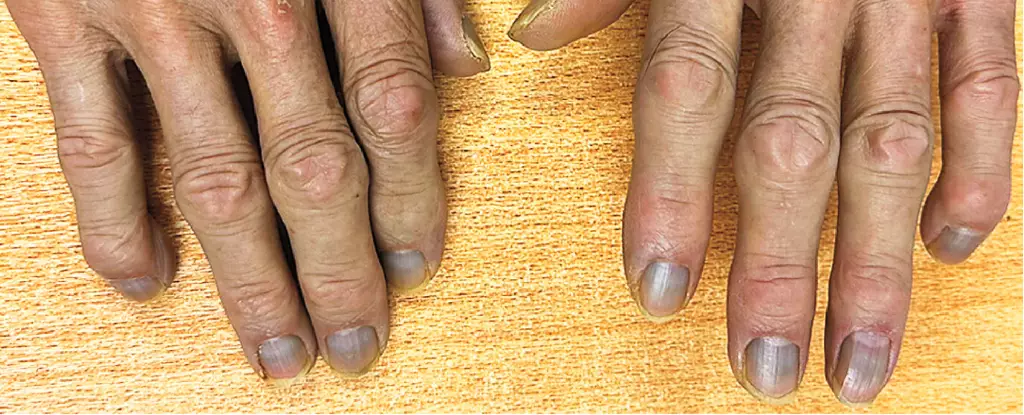The human body is a remarkable system, capable of processing a wide array of substances, but it can also fall prey to rare accumulation disorders that attract both medical curiosity and concern. In one such case, an 84-year-old man presented with urinary flow obstruction at a hospital in Hong Kong, but what baffled healthcare providers was not merely his immediate urological issue. Instead, it was the distinct grayish tint of his skin, eyes, and nails—an eye-catching indicator of an underlying complication known as argyria.
As health professionals delved deeper into the man’s medical history and symptoms, it became clear that his unusual skin discoloration was not an acute finding; rather, he had exhibited this faint ashen hue for five years prior. This history prompted extensive blood testing, which ultimately revealed an astonishing silver concentration—more than 40 times the normal level. Such systemic buildup of silver is rare but well-documented, leading to symptoms characterized by a gray or bluish skin tone, known scientifically as argyria.
Argyria occurs when silver accumulates in the body, impacting various tissues, including the skin, sweat glands, and blood vessels. The metallic element can form oxidized granules under the skin, leading to a distinctive and irreversible discoloration. Historically, this condition was most prevalent among artisan workers who handled silver during mining or crafting processes, but modern cases often stem from exposure to medications that utilize silver’s antimicrobial properties. Despite widespread marketing claims, health authorities such as the US Food and Drug Administration have firmly stated that colloidal silver—often marketed as a cure-all or detoxifying agent—lacks scientific support, highlighting its potential dangers.
In a perplexing twist, this particular patient’s history did not reveal a clear source for his silver exposure. Having worked for years as a waiter, he lacked the occupational hazards tied to silver mining or crafting. Furthermore, an assessment of his home environment showed no obvious risks. This raises questions about the nature of silver accumulation in individuals not directly engaged in industries known for such exposure.
Interestingly, silver can enter the body through various pathways: inhalation, dermal absorption, or ingestion. Once introduced into the body, silver ions are disseminated through the bloodstream, where they can precipitate reactions with organic compounds, leading to the silver deposition that manifests in characteristic skin discoloration. This exceptionally high silver concentration in the elderly patient became a source of professional intrigue, compelling healthcare providers to investigate further.
Though the striking hue may lead to social discomfort or psychological distress, the long-term health risks associated with argyria are typically minimal. In moderate cases, the uptake of silver is largely benign, with limited implications on metabolic functions or drug efficacy. However, at extreme levels, it may interfere with the absorption of certain medications, such as antibiotics and hormones like thyroxine.
Regrettably, the accumulation of silver cannot be reversed; thus, treatments aimed at removing silver from the body currently do not exist. The patient’s dilemma is further compounded by the permanent nature of his condition, as the cosmetic implications of the slate-gray tone are lasting. For this reason, the man requires monitoring of his silver levels and a comprehensive approach to managing any related health concerns.
The 84-year-old man’s case serves as a compelling reminder of the complexities inherent in the accumulation of metals within the human body. A chance presentation of symptoms led to a diagnosis that combines elements of historical context, modern medical practices, and the intricacies of individual case analysis. As more information becomes available regarding argyria and its impact, it remains clear that the mysteries surrounding the origins of this condition illustrate not only the vast array of human experiences but also the ongoing need for vigilance in medical observation and treatment. The unexpectedly curious case of silver accumulation invites continued investigation and learning within the medical community, keeping the patient’s health and wellbeing at the forefront of future discussions.

